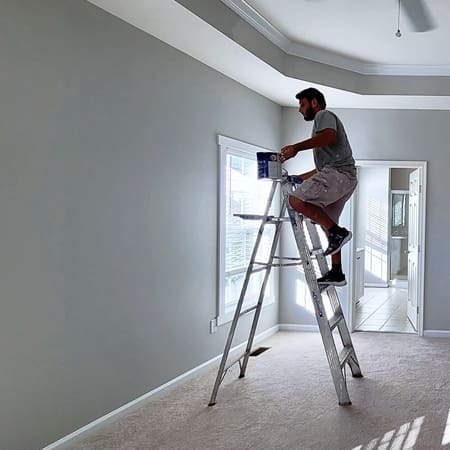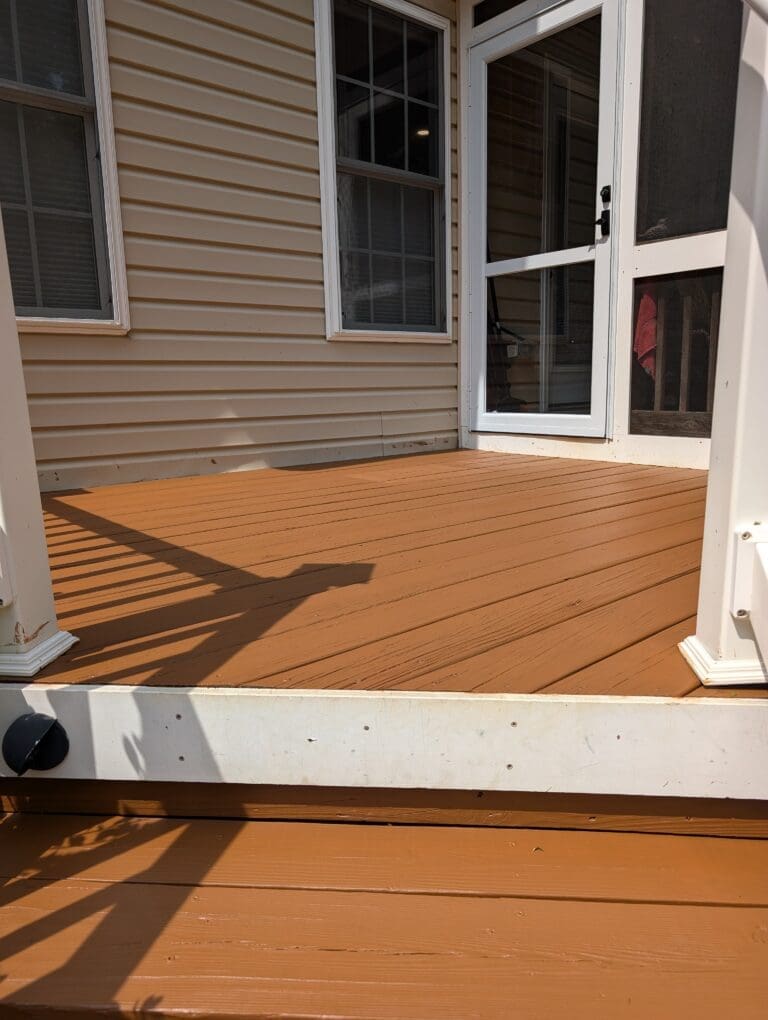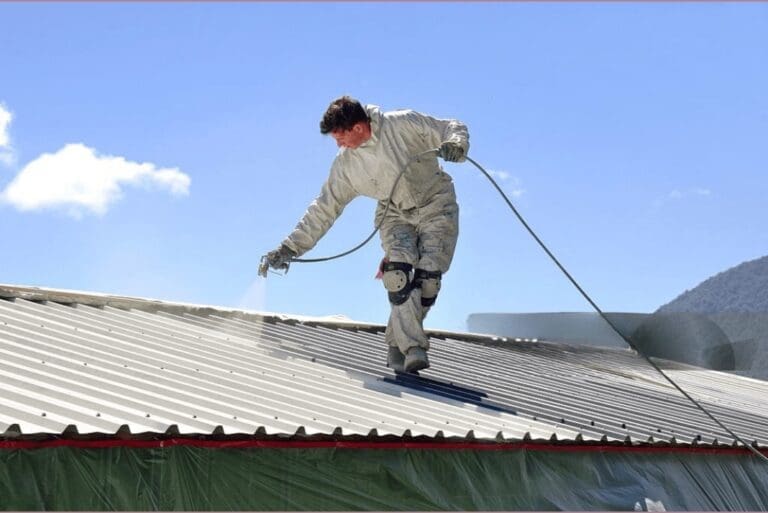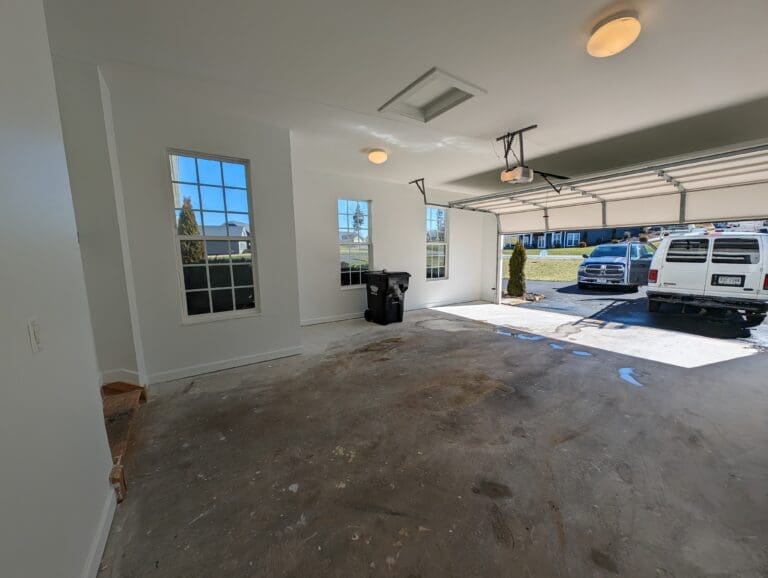What to Expect from Professional Painters: A Step-by-Step Overview
Hiring professional painters should never feel like a gamble. Whether it’s a full interior repaint or a complete exterior transformation, knowing what the process looks like helps set the right expectations and ensures a smoother experience from start to finish. Reputable painters bring more than just brushes and ladders—they bring a system, attention to detail, and a commitment to doing the job right.
At Alpha Painting, we make that process as clear and stress-free as possible for homeowners and commercial clients throughout Fredericksburg, VA. From first contact to final walkthrough, here’s what a well-managed painting project looks like from a professional standpoint.
Table of Contents
Initial Contact and Consultation
The process begins the moment you reach out. Expect a prompt and professional response—no vague timelines or unclear availability. The first conversation usually includes basic questions about the size and scope of the job, what areas need painting, and any target dates you’re working around.
After the initial conversation, a site visit is scheduled. This visit isn’t just about walking around with a clipboard. It’s an opportunity for the painters to understand surface conditions, note any repairs needed, and determine the right materials and approach. If you’re repainting interiors, they’ll check walls for nail pops, settlement cracks, or existing paint issues. On exterior projects, they’ll evaluate things like peeling, mildew, or damage from sun and moisture.
Written Estimate and Project Scope
A professional painter will never give you a vague verbal quote and call it a day. A written estimate outlines what areas will be painted, what surfaces will be prepped, what products will be used, and how long the job will take.
This step protects both the client and the contractor. You should know exactly what’s included—wall prep, primer, number of coats, trim work, clean-up—and what’s not. For example, if drywall repair or wood rot replacement is required, that should be clearly identified with cost breakdowns. Transparency avoids misunderstandings later.
The estimate often includes a color consultation as well. Professionals can guide you on what finishes work best for different surfaces, how colors will look in certain light, and how to avoid common paint selection mistakes.
Scheduling and Pre-Job Preparation
Once you’ve approved the estimate and scheduled the job, the crew will typically walk you through the prep needed before they arrive. For interior work, that might mean removing wall hangings, clearing small items, and storing valuables. For exterior work, it could involve trimming plants, moving patio furniture, or ensuring access to gates and water spigots.
Reliable painters don’t leave you guessing. You’ll know what’s expected, and you’ll get a clear start date—plus a time of day they’ll be arriving. If weather impacts the schedule (for exterior jobs), a trustworthy company communicates promptly and adjusts without sacrificing quality.
Surface Preparation: The Foundation of a Lasting Finish
Professional painters never skip or rush the prep. This is where most DIY jobs and low-cost painters fall short. Surface prep is what allows paint to bond properly, lay smooth, and last for years without chipping or bubbling.
On interiors, this might include patching holes, sanding rough spots, caulking gaps, and applying stain-blocking primer. For exteriors, it could involve pressure washing, scraping loose paint, sanding, and applying wood filler or replacing damaged siding sections.
Great prep work takes time. It’s noisy, dusty, and not very glamorous—but it’s what separates durable results from short-lived cover-ups.
Priming and Masking
Before the actual color goes on, pros focus on control and protection. Floors, furniture, and fixtures are covered with drop cloths or plastic sheeting. Light switches, baseboards, and trim are masked cleanly. The crew works efficiently, but without cutting corners that cause drips, overspray, or splatter.

Priming isn’t always necessary, but when it is, it’s done with care. Stained or porous surfaces, bare wood, new drywall, or drastic color changes all require a base coat to help the finish coat do its job. Skipping primer in these situations can ruin the final look.
Application of Paint
This is the part clients often focus on, but it’s only one piece of the process. By the time painting starts, all the hard prep work has already laid the foundation for clean, professional results.
Professional painters use high-quality brushes, rollers, and sprayers, depending on the surface and setting. Their technique minimizes brush marks, roller lines, and uneven coverage. Edges are cut with precision, corners are blended cleanly, and the right number of coats are applied—not just one thick one to save time.
Interior jobs often involve painting ceilings, walls, trim, and doors in different finishes—flat, eggshell, satin, or semi-gloss—each applied with care. Exteriors require the same precision but with added durability considerations, using weather-resistant paints that can handle UV exposure, rain, and temperature swings.
Daily Clean-Up and Jobsite Etiquette
Professionals don’t treat your home like a construction site. At the end of each workday, they tidy up—removing tools, sweeping floors, and keeping walkways clear. Dust is minimized, and furniture is covered if the job spans more than a day or two.
If painters are in your home while you’re working, resting, or parenting, their behavior matters. You should expect courteous communication, respectful use of space, and a clean work area throughout the job. You’re not just hiring skill—you’re inviting people into your space.
Final Walkthrough and Touch-Ups
Once the painting is complete, a walkthrough is standard. The crew should go over every room or exterior surface with you, pointing out what was done and answering questions. You’ll get the chance to spot any missed areas, uneven coverage, or places needing touch-up.
Good companies don’t rush this part. They carry out final details with care, ensuring you’re happy before packing up. Some may schedule a return visit for touch-ups after the paint fully cures, especially for exterior jobs where changes in sunlight can reveal missed spots.
The project isn’t truly finished until you’re satisfied—and the space is fully restored.
Post-Job Support and Maintenance Advice
Professionals don’t disappear the moment the paint dries. You should expect a conversation about how to care for your newly painted surfaces. For interiors, that may include cleaning instructions, cure times, and guidance on when to hang items back up. For exteriors, you may get advice on washing frequency or spotting early signs of wear.
Warranties should be part of the discussion. Reputable painters back their work with written guarantees—usually covering labor and materials for a defined period. This protects your investment and shows they stand behind their craftsmanship.
Why the Process Matters
The difference between a rushed paint job and a professional finish is noticeable every time you walk into the room or pull into your driveway. It’s not just about color—it’s about prep, quality materials, skill, and respect for your property.
At Alpha Painting, our step-by-step process ensures results that last, with every surface handled the way it should be. Whether you’re planning to freshen up a single room or repaint your entire home exterior, knowing what to expect makes it easier to hire confidently and get the results you deserve.







